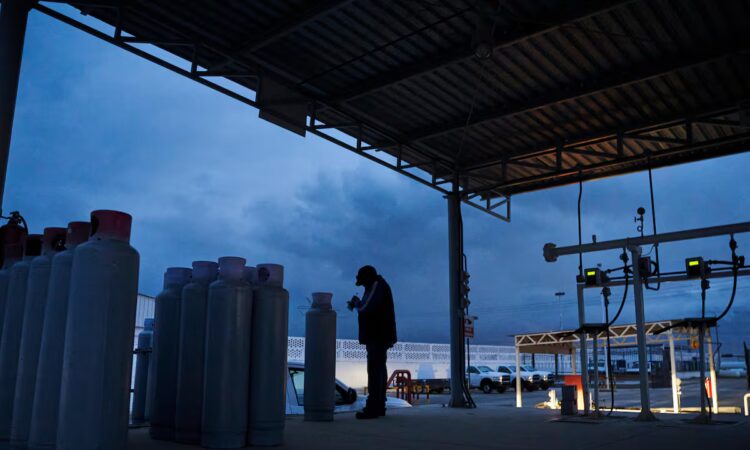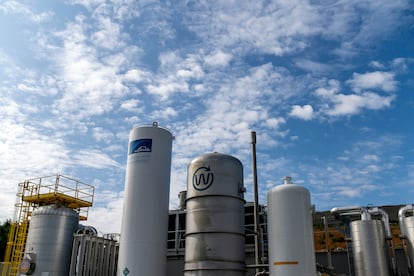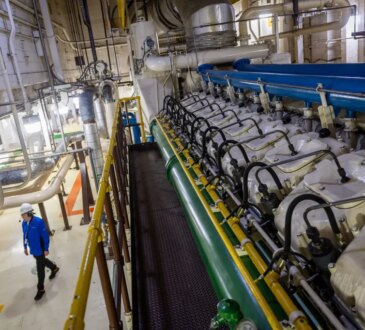Natural gas has the potential to be a bridge to renewable energy in Mexico | Economy and Business

There’s a clear tension between developed and emerging economies regarding how to achieve the energy transition. While Europe insists that the time has come to accelerate the pace, Asia, Latin America and Africa are experiencing lags in economic growth, which hinder the monumental leap toward wind or solar generation. In this debate, some parties propose natural gas as a transitional fuel: it pollutes less than other fossil fuels, it’s more accessible, and it’s seen as a first step in the direction of renewable energy.
In this context, Mexico stands out. The country is a net importer and large consumer of gas for the purposes of electricity generation, although the use of EVs remains marginal. According to a study by Ember, a think tank specializing in clean energy, the country’s demand for gas to generate electricity has increased fivefold since 2020. This has triggered imports from the United States, amidst a decline in domestic production. International purchases have increased more than 22-fold, and it’s estimated that almost half of the electricity consumed in 2024 will come from Mexico’s northern neighbor’s gas pipelines.
The current scenario exposes the country’s high energy vulnerability. But the Ember study estimates that, if Mexico manages to generate up to 45% of its electricity from renewable energy by 2030, it could reduce its import costs by $1.6 billion annually.
For the Mexican gas sector, achieving this goal will require a series of decisions that include innovation, new public policies, as well as the strengthening of domestic production, storage and distribution.
“It’s necessary to open up the conversation to discuss all points of view, [so that we can] reach a consensus that will enable development. [We have to consider] natural gas as a transition fuel that will allow for interaction or diversification of the energy matrix with other types of energy sources, such as wind or photovoltaic. Even at the national level, biofuels — specifically biogas, which is chemically very similar to natural gas — have gradually been adopted in a very surprising way,” Guillermo Gómez explains. He’s the technical director of the Mexican Association of Natural Gas Vehicles, LNG, CNG and Biogas (AMGNV) and director of the sustainable consultancy G2H.
Burning natural gas generates approximately half the carbon dioxide (CO2) produced by the same amount of coal, according to the Commission for Environmental Cooperation (CEC). And, according to the AMGNV, when it comes to vehicle use, it reduces CO2 emissions by up to 35% when compared to gasoline or diesel, which still fuel the vast majority of the vehicle fleet. The use of natural gas also contributes to reducing suspended particles that deteriorate air quality and cause respiratory illnesses in highly polluted jurisdictions, such as Mexico City.
Biogas, for its part, can be used in the same thermal processes as natural gas. It’s obtained from the decomposition of organic matter — urban solid waste, agricultural waste, or animal excrement — which is subsequently captured and refined. “It will allow for greening in some natural gas processes,” Gómez adds.

The balance between growth and conservation
These scientific advances will be crucial in the next decade of development in Latin America. Even more so as governments, corporations and consumers increasingly feel the effects of an increasingly hot, polluted and vulnerable planet.
Mexican President Claudia Sheinbaum, a scientist with an environmental background, has said that her administration hopes to double the amount of electricity generated from renewable sources, a highly ambitious goal. By 2024, Mexico generated 22% of its electricity from renewable sources, which is “below the world average of 32% and well below the Latin American average of 62%,” according to Ember.
The country has also committed to reducing its greenhouse gas emissions by up to 45% through international treaties, such as the Paris Agreement. “Today, we’re still lacking the ability to reach that goal,” Rubén Ponce summarizes. He’s an environmental engineer and consultant at Valora, a firm specializing in corporate sustainability. Ponce emphasizes that, even though Mexico is one of the few countries with grid parity (that is, where it’s cheaper to consume renewable energy than conventional energy), before embracing this advantage, it’s necessary to resolve the bottlenecks of unmet electricity demand. Currently, few companies can afford self-generation and storage projects. However, he points out, interest is growing.
“And here, we have a dual vision. The social aspect at the [administrative or governmental] level asks: ‘How do we care for our society through new regulations, [all while searching for and developing] new technologies, in order to achieve this [transition] immediately?’And, on the other hand, the economic aspect asks: ‘How do we develop our economy?’ Because we can’t just stop and lose out on quality of life,” he adds.
This reality also reflects a paradigm shift that has begun to gain global traction. There’s now more humility in recognizing that attempting to completely eliminate the carbon footprint generated by human activity is practically a utopia. Therefore, efforts must focus on reducing, mitigating and offsetting environmental impacts.
“Much of the criticism is that, if natural gas consumption increases, there will also be a large amount of emissions, especially fugitive ones that cannot be controlled,” Gómez acknowledges, from his position in the Mexican natural gas sector. “However, the contribution of methane emissions (the main component of natural gas) from the oil and gas sector is 10% of all fugitive emissions in Mexico. The rest come from the agricultural sector, due to the consumption of animal meat — mainly pork and beef — which generate around 60%. And the other 30% [of fugitive emissions] are in solid waste. And that’s a point in favor of biogas,” he concludes.
Sign up for our weekly newsletter to get more English-language news coverage from EL PAÍS USA Edition




